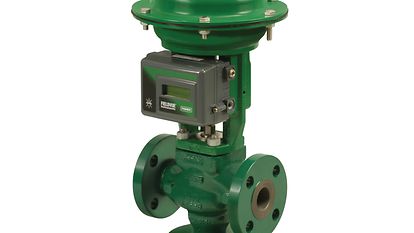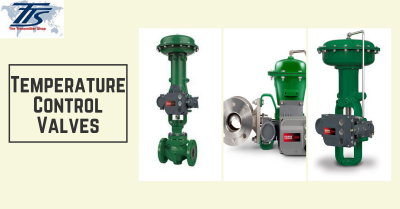Vital Factors to Think About When Selecting Control Valves
Vital Factors to Think About When Selecting Control Valves
Blog Article

Maximize Energy Savings and Comfort With Advanced Structure Automation Controls
In the realm of modern design and center management, the integration of sophisticated building automation regulates stands as a critical innovation. By harnessing the power of automation, buildings can adjust, respond, and progress in means that were once unbelievable.
Energy Efficiency Perks
Power efficiency benefits can dramatically decrease energy usage and functional prices in buildings. By applying energy-efficient techniques and modern technologies, building owners and drivers can attain substantial savings while likewise contributing to ecological sustainability. Among the primary advantages of improving energy effectiveness in structures is the decrease of energy expenses. Energy-efficient systems, such as sophisticated structure automation controls, can optimize the use of resources like home heating, cooling, and lights, bring about reduced power expenses over time.
Furthermore, boosted energy effectiveness can lengthen the life-span of structure equipment and systems. By operating extra efficiently, HVAC systems, lighting fixtures, and other building components experience much less wear and tear, resulting in decreased upkeep and replacement expenses. Furthermore, energy-efficient structures often command higher building worths and rental rates, giving long-term economic advantages to proprietors.
Moreover, power effectiveness can boost passenger convenience and efficiency. Effectively controlled indoor settings with optimal lights and thermal problems create a more conducive and pleasurable work space, resulting in boosted worker satisfaction and performance. On the whole, the power performance benefits related to advanced building automation controls are diverse, including cost savings, environmental stewardship, and owner well-being.
Enhanced Convenience Control
Enhancing comfort control in building atmospheres calls for a sophisticated integration of sophisticated automation systems for optimum owner well-being. By utilizing sophisticated structure automation controls, centers can customize the interior setting to satisfy the details needs and preferences of occupants. These systems enable specific guideline of temperature, ventilation, and illumination, creating a productive and comfortable environment. Owner complete satisfaction and efficiency are closely linked to thermal comfort, making it important to have systems in location that can adapt to changing problems in real-time.
Enhanced convenience control goes beyond fundamental temperature adjustments. It consists of functions such as personalized setups, tenancy sensing units, and natural light application to develop a responsive and vibrant atmosphere. By integrating these innovative controls, buildings can not just improve convenience but additionally enhance power effectiveness by optimizing system procedures based upon actual tenancy and use patterns. Eventually, prioritizing occupant convenience via sophisticated automation systems leads to a much more satisfying and healthier interior environment.
Functional Performance Improvements

Moreover, the application of real-time tracking and analytics devices makes it possible for building drivers to identify energy inadequacies and operational anomalies immediately. By constantly checking energy usage patterns and system efficiency metrics, adjustments can be made in real-time to enhance energy intake and make sure peak operational effectiveness. control valves. In addition, incorporating demand feedback strategies into building automation controls can additionally enhance operational efficiency by dynamically changing energy use based upon grid conditions and pricing signals
Indoor Environment Optimization
Reliable indoor environment optimization is a fundamental aspect of building automation controls, making certain owners' convenience and wellness while making best use of energy savings. By utilizing sophisticated sensors and controls, developing automation systems can constantly readjust and keep track of temperature level, moisture degrees, air high quality, and ventilation to create an optimal indoor environment. Maintaining regular and comfy conditions not only boosts owner complete satisfaction however also boosts productivity and overall health.
Interior climate optimization also plays a vital function in energy performance. By fine-tuning heating, ventilation, and cooling systems based upon real-time information and occupancy patterns, building automation controls can dramatically lower energy consumption - control valves. Carrying out approaches such as demand-controlled ventilation and thermal zoning can assist decrease energy waste while making certain that each location of the structure receives the essential conditioning.

Sustainable Environment Creation
Building automation regulates not only optimize interior environment conditions for energy efficiency and owner convenience yet likewise lay the foundation for creating a lasting atmosphere with critical management of systems and resources. By integrating sophisticated structure automation technologies, such as sensing units, actuators, and intelligent software application, facilities can keep an eye on and readjust power usage in real-time to reduce waste and lower their carbon impact. These systems enable anticipating upkeep, recognizing prospective issues prior to they rise and optimizing devices efficiency to enhance durability and effectiveness.
Additionally, sustainable setting production expands past energy administration to encompass water preservation, waste reduction, and interior air top quality pop over to this web-site enhancement. Structure automation controls can control water use, find leaks, and make sure proper waste disposal methods, adding to general sustainability initiatives. Additionally, by controlling and monitoring ventilation and filtering systems, these technologies boost occupant health and efficiency while reducing power consumption linked with HVAC operations.
Verdict
Finally, progressed building automation manages deal significant benefits in terms of power savings, comfort control, operational performance, interior environment optimization, and creating a sustainable atmosphere. By applying these controls, structures can achieve optimal performance while decreasing power intake and improving occupant comfort. It is apparent that making use of sophisticated automation innovation is critical in enhancing building performance and creating an extra sustainable future.
Power efficiency benefits can considerably decrease energy intake and functional prices in structures. On the whole, the power performance advantages associated with sophisticated building automation controls are multifaceted, encompassing cost financial savings, ecological stewardship, and resident health.
Furthermore, integrating demand response approaches right into structure automation controls can even more enhance functional effectiveness by dynamically adjusting power use based on grid conditions and rates signals.
Structure automation controls not just enhance indoor environment conditions for energy performance and passenger comfort yet additionally lay the foundation for developing a lasting environment with tactical monitoring of systems and resources.In final thought, progressed building automation regulates deal considerable benefits in terms of power savings, comfort control, functional efficiency, indoor environment optimization, and developing a sustainable setting.
Report this page